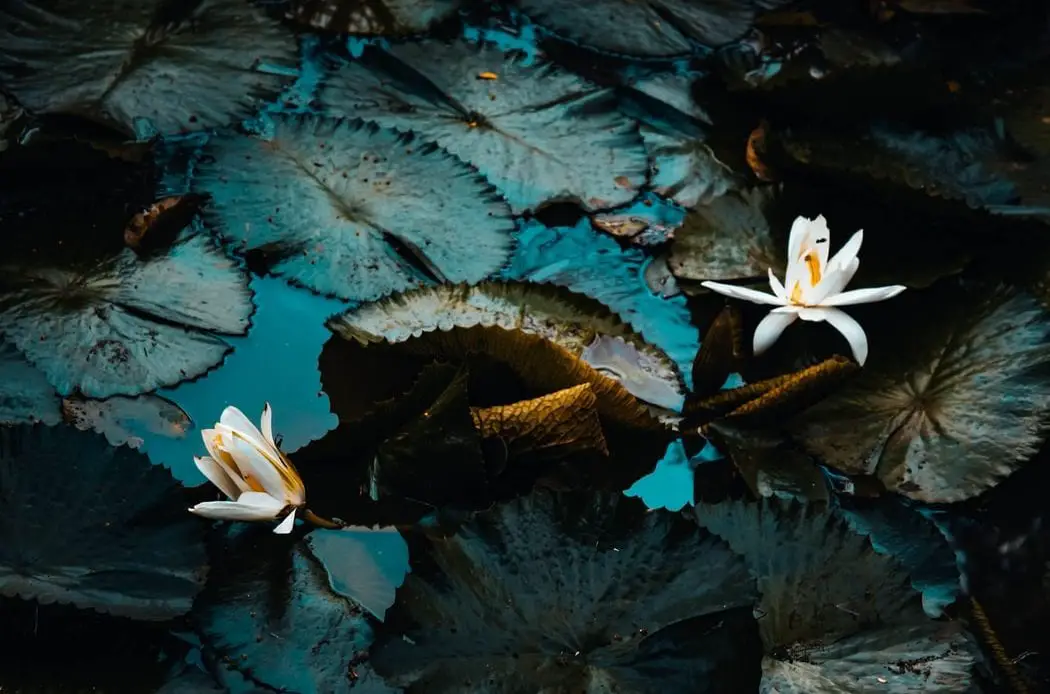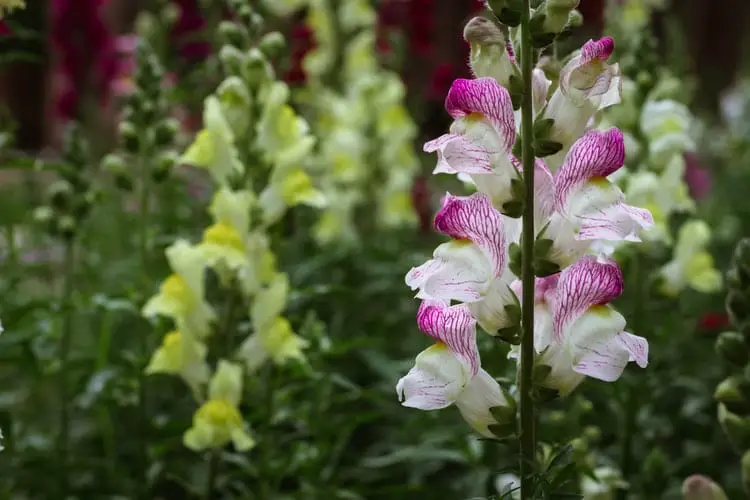
Hydroponic systems give the benefit of being able to nurture a garden even in a crowded urban household. As a hydroculture method that is rapidly gaining momentum, hydroponics involves gardening without soil. So, the space required to set up a hydroponics system is less. Hydroponic plants do not always have to be edible crops. You can also use this method to grow ornamental flowering plants.
Best flowering plants to grow in the hydroponics method
All types of gardeners love flowering plants simply because they can bring any garden space to life. Here are the most interesting hydroponic plants that can decorate your garden with the most vibrant colors.
1. Peace lily:
Both hydroponics and semi hydroponics setups work well for a peace lily. This is a hardy plant for any amateur who is venturing into flowering plants. This makes a great foliage plant till the bloom starts to appear. And once the flower appears, it can turn into a gem in your garden. It is the white spathe that surrounds the actual bloom that makes the plant look even more stunning.
Quick tips
- It can grow easily even in a vase filled with water. The plant adapts to the hydroponics medium by developing shorter roots that can maximize nutrient absorption from water.
- Remember to use chlorine-free water while raising peace lilies.
- Peace lily plant is an air purifier plant that can improve the quality of indoor air.
- This plant is toxic to pets when any part is ingested.
- Maintaining the pH range of the water in the system between 5.6-6.5 would ensure healthy growth and development of both foliage and blooms.
2. Petunia:
With a wide range of colors, this tropical plant is a popular choice for hydroponic farmers in the hot regions. Though most hydroponic systems are set up indoor, petunias require ample sunlight for healthy growth and brighter blooms. You can choose a sunny spot on your terrace to obtain the best result by raising these plants hydroponically.
Quick tips
- Maintaining the pH level of the growth medium between 6.0-7.0 is critical for petunias.
- These are tiny plants when they are young. But a single plant can be as dense as 3 feet when fully grown. Provide the plant enough room to grow when you create your hydroponic setup.
3. Orchids:
As a moisture-loving plant, this is one of the most popular hydroponic plants for growing indoors. A little extra care and the best quality plant food would ensure that you enjoy the brightest of blooms throughout the flowering season. Known to be epiphytic, this plant quickly adapts to hydroponic medium due to the efficiency of its root system with respect to moisture absorption.
Quick tips
- Mimicking the default growing conditions passive hydroponic medium can also be used to raise orchids.
- With the ability to fully control the growing conditions, you can easily experience blooms even outside the flowering season when this plant is grown hydroponically.
- This plant loves to grow in a medium with pH in the range 5.5-6.5.
- Keeping the hydroponics setup in such a way that there are proper drainage and means for aeration of the roots can enhance the growth of the plant.
- Once the bloom appears, it stays fresh and continues to liven up your room for months at a stretch.
4. Carnations:
One of the easiest hydroponic plants that any florist would appreciate is the carnation. Germination is quicker when raised hydroponically. This method is also known to give a faster growth in carnations. As a result, this plant is grown hydroponically by many commercial gardeners. This plant can be grown both from seeds and from cuttings when grown without soil. You can use grow lights or provide natural lighting for the setup to ensure that it receives anywhere between 5 and 8 hours of light exposure each day.
Quick tips
- For tall-growing carnation plants, your hydroponic setup should have vertical support systems. This will help in preventing the plant from toppling and the stem becoming weak especially when it is in full bloom.
- As with growing carnations in soil, disbudding and pruning of unwanted buds would be essential to promote healthy blooms.
- Keeping the pH level of the growing medium around 6.0 would be suitable for carnations.
5. Chrysanthemum:
This classic flowering plant is also among the popular hydroponic plants grown by florists. In the cut flower production business, this plant is very popular as it delivers great results without the fear of plant diseases.
Quick tips
- This is another plant with a root system that is vulnerable to damage from chlorine in the water. So, make sure that the water fed to the hydroponic system doesn’t contain even traces of chlorine.
- Proper aeration of the roots promotes healthy buds.
- This plant gives better yield and shorter duration till blooms when grown hydroponically.
- Better the sunlight exposure of these plants better would the blooms be.
- This perennial can be nurtured for years in your hydroponics setup. But make sure that you save some cuttings two years after planting. This will ensure that you can save some of the plants if there is pythium infection.
6. Snapdragons:

Long and vibrant blooms of this plant can light up any flower garden. It is a plant that can easily be grown in water but remember that this one doesn’t stand too much moisture. Raising it in hydroponic setups can therefore be tricky for beginners. But when you take care of the drainage system and provide freshwater supply, you have nothing to worry about. Perlite medium for a semi-hydroponic setup can also be used for better results. This would, in turn, provide good support for the root system.
Quick tips
- The plant can reach a height of 4-feet even when you raise it hydroponically. This is, therefore, another plant that might require vertical supports as it grows. This would also support the tall stalks of flowers, which tend to get slightly heavy when fully bloomed.
- The plant doesn’t do well in shady conditions. It might be better suited to grow in your terrace-based hydroponic unit than indoor.
- Ensure that the growth medium has a pH level in the range 6.2-7.0 to induce fresh growth and brighter flowers.
7. Hyacinth:
It is one of the easiest hydroponic plants that can impress any new gardener. Without complicated nutritional needs, this plant can give you vibrant blooms. The fragrance of these flowers can also create a fresh ambiance in your hydroponics setup. Both hydroponics and regular cultivation of these plants deliver similar results. The quality of the blooms and the colors also remain unchanged in the water medium.
Quick tips
- The bulb germination rate is good when raised in water.
- Though you only need a small combination of plant nutrients for this one, these nutrients should be constantly available for this fast-growing plant.
- Bulbs go dormant after flowering when you cut the stem and prevent seeding. These then continue to gather all the nutrients from the medium ready to bloom next season.
- Organic fertilizers are best suited for these delicate bulbs to grow healthy.
8. Gerbera daisy:
One of the most popular flowers in floral arrangements and cut flower business is the gerbera daisy. It thrives wonderfully in hydroponic mediums. Sprouting takes place within 3 weeks from planting the seeds. The plant’s versatility is what makes it popular among hydroponic farmers. It is hardy and can be raised both indoor and outdoor with a good success rate in all conditions.
Quick tips
- For gerberas to flourish, maintain the growth medium’s pH level between 5.4-5.8. This is among the handful of requirements to ensure for this easy-to-grow flowering plant.
- Ensure that there is a good supply of clean water at all times along with the provision for efficient drainage and circulation.
- There are commercial bloom formulations that can be used to speed up the appearance of flowers and also to enhance plant health.
Some of the prominent benefits of using hydroponics for flowering plants
This soil-less farming method has numerous benefits. It is also an easy method even for beginners.
- Even the finicky flowering plants with tricky nutrient needs can be raised in the hydroponics method. This is because of the full control you have over the nutrients fed in the medium.
- Controlling weeds is one of the most common problems that many gardeners face while raising a flower bed. This can be avoided upon nurturing flowering plants in hydroponic setups.
- Many pesky bugs can hinder the growth of flowering plants or hamper the appearance of the blooms. With hydroponics, it is easier to manage plant pests.
- Hydroponic plants can be nurtured within a small space even in a compact apartment.
With all these benefits offered, anyone who wants to nurture flowering plants would find hydroponic farming to be a more reliable method. It is also a beginner-friendly system that can be understood with a little amount of research. This lets you set up your own flower garden without any hassle.
